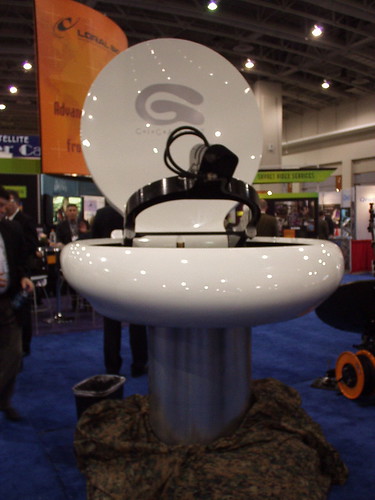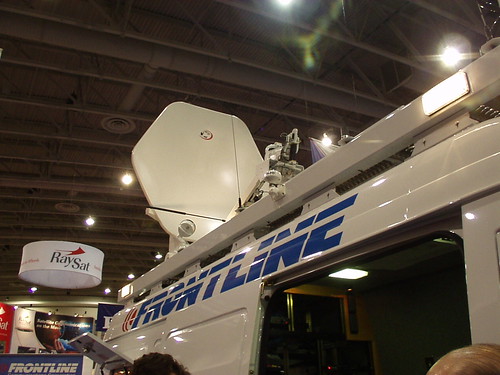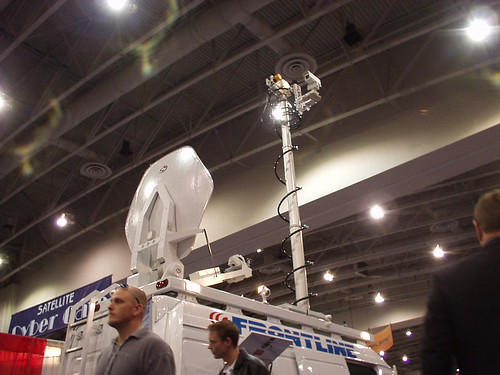It’s funny sometimes, how often the rest of the world “gets it” on on issues where the U.S. doesn’t. I couldn’t help thinking of that when I saw a post over at Personal Democracy Forum, about the free book Wireless Networking in the Developing World.
The massive popularity of wireless networking has caused equipment costs to continually plummet, while equipment capabilities continue to increase. By applying this technology in areas that are badly in need of critical communications infrastructure, more people can be brought online than ever before, in less time, for very little cost. We hope to not only convince you that this is possible, but also show how we have made such networks work, and to give you the information and tools you need to start a network project in your local community.
This book was created by a team of individuals who each, in their own field, are actively participating in the ever-expanding Internet by pushing its reach farther than ever before. Over a period of a few months, we have produced a complete book that documents our efforts to build wireless networks in the developing world.
Why does anyone want to build wireless networks in the developing world? I imagine that’s the first question that will come to mind for a lot of Americans, because to a large extent we still see internet access — and particularly wireless internet access — as luxury. The prevailing sentiment could be summed up as “If you want internet access, buy a computer and pay for the service. And if you can’t afford that, then you have more important needs anyway. The developing world is, after all developing, right. So, maybe there are more urgent needs than making sure “more people can be brought online than ever before,” right?
Well, maybe not. The PDF post about WNDW reminded me of a piece I saw in AlterNet last week that underscored how accessible wireless networking has empowered people in other countries which are way ahead of us on that frontier.
In the not-so-distant-future, broadband will be an indispensable part of economic, personal, and public life. Those countries that achieve universal broadband are going to hold significant advantages over those who don’t. And so far, the United States is poised to be a follower — not a leader — in the broadband economy.
… The economic ramifications are profound. “Asians will have the first crack at developing the new commercial applications, products, services, and content of the high-speed-broadband era,” writes Bleha. Already, South Korea, which leads the world in the percentage of its businesses and homes with broadband, is the number one developer of online video games — perhaps the fastest-growing industry today. What’s more, societies in which broadband use is near-universal will adapt to its uses much more quickly than those where access is available only to the well-to-do few.
The countries surpassing the United States in broadband deployment did so by using a combination of public entities and private firms.
Meanwhile, in the states we’re paying a lot more than citizens in other countries for significantly slower broadband and wireless, while our own government subsidizes corporations and DSL providers for maintaining high rates and slow service while also cutting the legs from under their competitors by denying them access to lines. In other words, no matter who your ISP is, it all comes through lines owned by one telecom corporation or another, which calls to tune to which everyone else dances.
We’ve had some isolated success stories despite this state of affairs. Philadelphia, which has been working towards citywide wireless for over a year, just finalized a 10 year contract with Earthlink to provide the service by next year. Cambridge and MIT are teaming up to provide free wireless to the city. Milwaukee is planning its own wireless network. But much more could happen much faster with the right kind of institutional support.
So, why is it important? Well the Korean and Japanese examples from the AlterNet article draw a pretty good picture of the economic benefits. But there’s another reason, as well as a pretty believable reason why community wireless is slow to take off stateside.
Community Internet could revolutionize and democratize communications in this country. But the major obstacle to universal, affordable broadband access for all Americans is not economic or technical. It’s political.
… Community Internet has the potential to revolutionize and democratize communications in this country. And that may be the reason why big cable and telephone companies and their political allies have launched a sophisticated misinformation campaign.
The political implications are also clear to see in countries like Lebanon and Korea where citizens have used ubiquitous internet access to challenge stagnate media institutions and topple corrupt governments. Therein may lie the reasons why we remain more wired that some of our fellow world citizens.
And that may also be the key to the advantage developing countries enjoy; the lack of powerful, entrenched, state subsidized opposition to community wireless. Whether they’ll continue to enjoy that advantage, if community wireless becomes more available and word of it reaches powerful ears in high places, remains to be seen. But we can hope, and perhaps learn by example in the meantime.



 I’m not exactly what anyone would call a “car guy.” As long as it has four wheels, a radio, and A/C (a necessity in the South), I don’t need to know much more. But when I saw a car at the Sattelite2006 exhibit hall, I figured it must have something to do with satellite radio. Besides, if it involves any sort of gadgetry, that’s enough to get my attention as long as I don’t have to look under the hood.
I’m not exactly what anyone would call a “car guy.” As long as it has four wheels, a radio, and A/C (a necessity in the South), I don’t need to know much more. But when I saw a car at the Sattelite2006 exhibit hall, I figured it must have something to do with satellite radio. Besides, if it involves any sort of gadgetry, that’s enough to get my attention as long as I don’t have to look under the hood.


